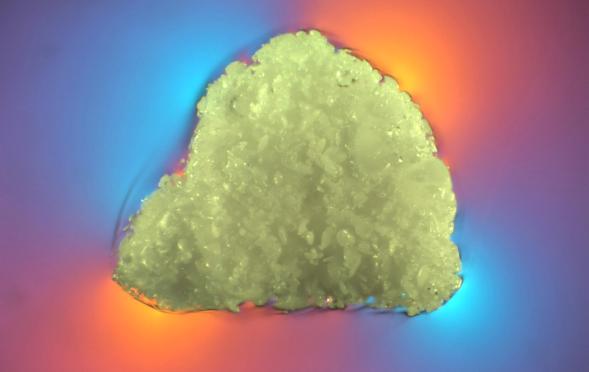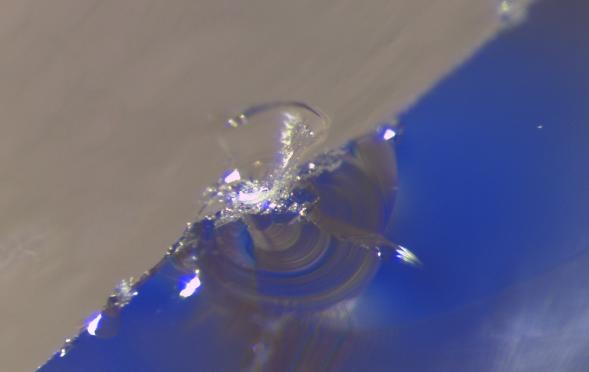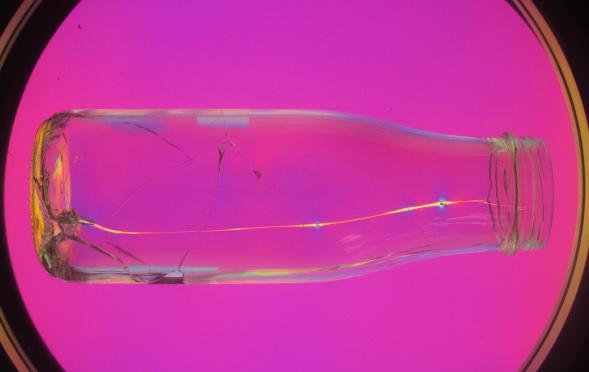Defect of the Month
Back to AGR's Library
Here in the United States, the fast food chain Chick-fil-A is renowned for their delectable fried chicken offerings. With just the right amount of crispy breading, their chicken nuggets are perfect for dipping into a variety of sauces, including the author’s favorite –Polynesian. This image of a stone in glass resembles a (rather bleached) nugget at the precise moment before being dunked into a (rather colorful) sauce. The “crispy breading” is comprised of small nodules of zirconia (ZrO2), which were created by the interaction of the glass melt with an AZS refractory. The glassy phase of the refractory dissolves over time, creating an alumina-rich solution sac and a stone of nodular zirconia. The “sauce” in this image is the induced stress in the surrounding glass, rendered visible with polarized light.

When a hard, pointed object smashes into a glass surface, it’s a bit like an ice pick biting into a frozen pond. Pronounced ripple markings extend downward from the impact site, while crushed glass marks the origin of the damage on the surface. Point contact damage is a sign of rough handling, and can be caused by glass fragments from a prior breakage event or exposed metal points somewhere in the factory. Lastly, the blue color in this image is not the actual glass color, but is just a reflection from an object used to enhance visibility of the surface markings.

Stones and cord in glass can sometimes go hand-in-hand. This container has a large refractory stone in the heel that also created a highly stressed cord in the sidewall. Although a polarimeter cannot reliably detect cord when the bottle is viewed through the sidewall, high magnitude cord stress can sometimes be seen in this manner. The small knots of stress within the cord are additional particles of the stone created as it dissolved within the melt.

A triangle of magenta, a slash of yellow, and a gentle gradient of blue would fit right into an exhibit of minimalistic abstract artwork. But the scientific content of this image is anything but minimal. Ring sections of glass are routinely examined for cord stresses using polarized light microscopy per ASTM C978. This particular ring section shows a strong tension cord on the exterior surface of the container, which appears bright yellow in this orientation. The magenta triangle is the background color, and the blue gradient is compression induced in the glass by the cord. High magnitude tensile stress on the exterior surface is a concern for containers, especially those that contain a carbonated product. Breakage in the pasteurizer or delayed breakage in the warehouse are the most common problems due to cord.
Pagination
- Previous page
- Page 2
- Next page